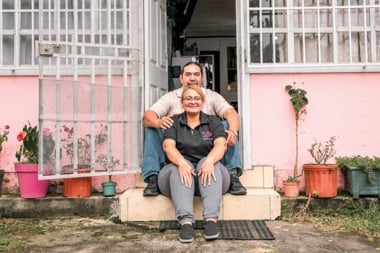
The topic of euthanasia and assisted suicide sits listlessly and uncomfortably on the national agenda in Canada, awaiting resolution and relief.
The topic of euthanasia, like a palliative care patient, sits listlessly and uncomfortably on the national agenda, awaiting resolution and relief.
It is the public policy issue few politicians care, or dare, to embrace, albeit not surprisingly: the size of the lobby in this country is painfully small and the potential payoff at the ballot box would be minimal. After all, for every right-to-die chapter, there is a right-to-life chapter.
Those most directly touched by the issue are, understandably, otherwise engaged, caring for the sick and dying or themselves confronting devastating health situations.
Euthanasia became a front-page topic for Canadians in the early ’90s when an articulate, feisty, 42-year-old Victoria woman who was battling Lou Gehrig’s disease (amyotrophic lateral sclerosis, or ALS) extraordinarily found the passion and energy to campaign for her right to die.
She asked, “If I cannot give consent to my own death, whose body is this? Who owns my life?” Rodriguez ultimately arranged for her own assisted suicide in 1994, but her issue has lived on, unresolved.
Public discussion persists about why society forces those who are suffering and clearly desirous of ending their misery to live on, when pet owners are actively encouraged to show mercy to their sick, dying animals by having them euthanized.
When it comes to human beings, however, the paradigm shifts.
The Law
The Criminal Code expressly outlaws both euthanasia (defined as “one person helping to end another person’s life in order to relieve suffering”), and assisted suicide (“killing oneself with the help of another”). Assisting a suicide can bring a sentence of up to 14 years in prison.
Canada has not turned a blind eye to enforcement, as was demonstrated in the high profile case of Robert Latimer, still serving time for the 1993 mercy killing of his severely mentally and physically disabled daughter. Latimer insisted he acted out of mercy when he ran a hose from the exhaust to the cab of his pickup where 12-year-old Tracy had been placed. She died of carbon monoxide poisoning. Latimer subsequently was convicted of second-degree murder and won’t be eligible for full parole until 2010.
As medical science enables people to live longer, and with debilitating diseases such as AIDS and Alzheimer’s on the rise, the question of relieving suffering becomes more pressing.
But some, such as Liberal Senator Sharon Carstairs, assert that legalizing euthanasia puts the cart before the horse. That is, Ottawa first must adopt standards to ensure good end-of-life care before assisted suicide can be considered as a legitimate choice.
The Politicians
In the absence of any public consensus, politicians are loath to act. The furthest the matter has progressed politically has been the tabling of a handful of nongovernment, private members’ bills. The most recent one was put forward in November 2005 by Bloc Quebecois MP Francine Lalonde. Her bill and others have died natural deaths on various House of Commons order papers.
The current Conservative government shows no inclination whatsoever to legislate on any hot-button, socially contentious issue–not abortion,not euthanasia.
As the Campaign Life Coalition reports, Harper has given the thumbs-down to liberalizing euthanasia laws. The coalition posted on its website a January 2006 quote by the soon-to-become prime minister, spoken during a leaders’ debate: “I think it’s important to resist the idea of giving the power to kill.”
As such, the topic has been left to the senate and courts, notably both unelected institutions.
The upper house of Parliament formed a committee in 1994 to do an extensive review of euthanasia and assisted suicide. It issued a report titled Of Life and Death. But the senators, like the citizenry, were divided, which set the stage for continued political inaction.
In 2000 a senate subcommittee followed up on the first effort with a more limited mandate, looking at palliative care. Its report, Quality End-of-Life Care: The Right of Every Canadian, concluded that “the principles, expertise, and medical infrastructure for the care of people facing death [are] evolving far too slowly.”
The Courts
A succession of court cases, which began with legal action launched by Rodriguez, established that Canadian courts, by and large, believe it is for legislators, not judges, to decide on euthanasia and assisted suicide.
Rodriguez specifically argued against legal provisions that precluded her from ending her physical nightmare. She felt it was unfair that she could not commit suicide–legal in Canada–simply because she didn’t have the physical capacity. Rodriguez took her fight all the way to the Supreme Court, but lost.
Among the reasons the judiciary has cited over the years for its reservations about euthanasia is a concern about the state essentially sanctioning the principle of suicide. The courts also believe there is a need to protect those who are sick and vulnerable. No protocols or safety measures exist to safeguard the sick from possible abuse.
The Doctors
The debate is of interest not only to the sick and dying and their relatives but to medical practitioners who inevitably are drawn into the euthanasia and assisted-suicide process. Several dozen Canadian doctors and lawyers issued a joint statement in October 2005, titled Euthanasia and Assisted Suicide, which expressed vigorous opposition to the notion of helping people die.
According to the group, assisting suicide is the thin edge of the wedge. If legalized, pressure on the infirm elderly to let go of life would then increase, followed perhaps by similar pressures on the young and disabled.
Helping with death will “have profound, adverse effects on the social fabric of our society, on our attitude towards death and illness, and on our attitude towards those who are ill or have disabilities. As physicians, we never want to become executioners of our patients.”
But, of course, on the other side are doctors who feel deep compassion for those in dire medical distress. It is impossible to say how many assisted suicides take place in hospitals across the country; obviously, no official records are kept.
The medical profession must do a jitterbug on the matter, as evidenced by a 2004 statement of principles issued by the College of Family Physicians Ethics Committee. While warning against intentionally causing a patient’s death, the statement counsels: “A decision to withhold or withdraw certain treatments might result in the earlier death of a patient, but this consequence can be ethically acceptable and legally permissible if carefully and thoughtfully made in consultation with the patient,” in a process reflecting informed choice.
All that said, the Right to Die Society of Canada maintains, in the final analysis: “Euthanasia and assisted suicide are covert and unregulated in the Canada of today… They must become available within an open, regulated, and equitable system.”
How do Canadians Feel About Assisted Suicide?
The community remains deeply polarized. A 2002 Compas poll put support for doctor-assisted suicide at 55 percent of adults. A study of terminal cancer patients completed five years ago by the Canadian Institutes of Health Research showed 63 percent support.
How do other governments deal with assisted suicide and euthanasia?
Oregon (US):
The only US jurisdiction with legislation allowing doctor-assisted suicide, since 1997. California has tried but so far failed to enact the Compassionate Choices Act, first introduced in 2005.
The Netherlands:
Has had a law permitting assisted suicide and euthanasia since 2002. The law formalized the practices that were in use and quietly sanctioned since 1984. Medical guidelines insist the patient asking for death be suffering unbearably and have no hope of improvement. A second doctor must agree with the decision to help the patient die.
Belgium:
Has had a law sanctioning euthanasia and assisted suicide since 2002, which requires involvement of two doctors plus a psychologist if doubts exist about the patient’s competency.
Switzerland:
Has allowed doctor- and non-doctor-assisted suicide since 1941, but prohibits euthanasia.




